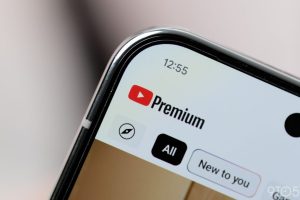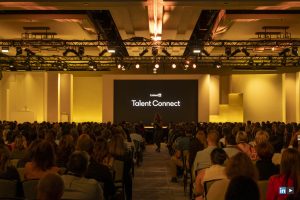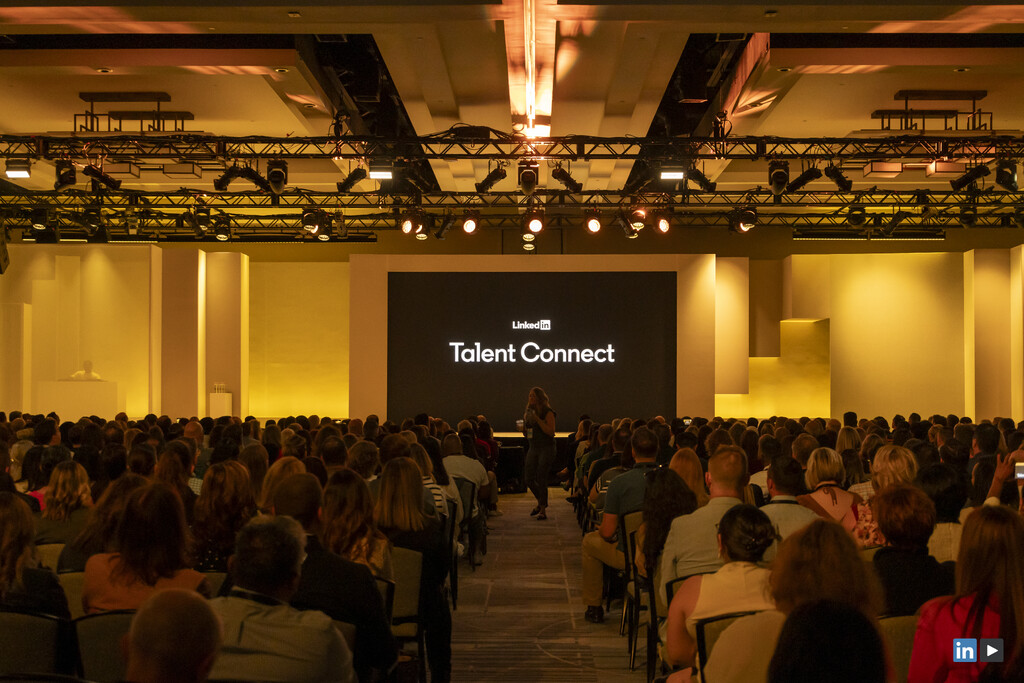Walking into Talent Connect 2024 in late October, I felt an electric energy — the DJ was on fire and the theme, “Where Possibility Works,” had everyone buzzing. It promised a space to dive deep into the future of talent acquisition, embracing new technologies, and building more inclusive workplaces.
And while there were exciting discussions, AI dominated every room, every conversation, every keynote. Yes, the potential of AI is enormous, but there’s still work to be done by all of to make sure we tap that potential responsibly.
I’m a huge fan of Talent Connect. This event sets the standard for energy, insights, and unforgettable experiences. (I joked with friends that I now expect private concerts and event-branded T-shirts at all future events!) Yet I left this year with one burning question: Are we genuinely ready to harness AI in ways that truly elevate the human experience at work?
Here are my four biggest takeaways from this year’s Talent Connect:
1. Leadership’s vision: AI to amplify human potential
LinkedIn CEO Ryan Roslansky and VP of product Hari Srinivasan set the stage with a vision of human-centered AI. They positioned AI as a tool not to replace us but to augment our capabilities, allowing us to focus on what we do best.
They announced new features like LinkedIn’s Hiring Assistant and AI coaching via LinkedIn Learning — tools designed to ease recruiters’ administrative burdens and promote employee development. For those of us in talent acquisition, facing record workloads, this vision of AI as a helpful assistant was a welcome shift.
Their message was ambitious yet grounded: AI should help us build stronger connections, not drive us apart. LinkedIn’s leadership seems committed to this balance, aiming to offer a model for others to follow. But, as always, the true impact lies in how these tools are implemented day-to-day.
2. Real-world Implementation: Practical applications of AI
One of the most insightful sessions featured LinkedIn’s own talent leaders — Erin Scruggs, global head of talent acquisition, and Jennifer Shappley, global head of talent. They shared real examples of how AI is transforming recruitment now, shifting the narrative from “AI is coming” to “AI is here.”
For anyone still skeptical, Erin and Jennifer demonstrated how AI is actively streamlining hiring processes and driving meaningful change today.
AI advisor Allie K. Miller, who has more than 1.5 million followers on LinkedIn, brought a crucial ethical lens to the conversation. Her talk underscored that ethical AI doesn’t happen by accident — it requires structured, deliberate choices. Her message was simple but impactful: Avoiding bias is not a checkbox but a mindset organizations must commit to from day one. Allie’s approach offered a needed brake tap to the general enthusiasm, showing that “all-in on AI” doesn’t work without a strong foundation in ethics and accountability.
3. Beyond the technology: Human-centered inspiration
It wasn’t all AI and LinkedIn. One of the most memorable moments of the conference was Jennifer Hudson’s keynote. She shared her journey from modest beginnings to EGOT [Emmy, Grammy, Oscar, and Tony winner] status, truly embodying the theme of “Where Possibility Works.” Her keynote was a powerful reminder of the irreplaceable qualities that drive success — resilience, authenticity, and perseverance. Technology can do many things, but it can’t replicate the power of human ambition and tenacity.
Best-selling author and podcast host Mel Robbins delighted her audience with her “5 Second Rule,” reminding us that true growth stems from personal accountability. Her practical advice about breaking unhelpful habits was a refreshing return to basics. While technology can optimize our tasks, Mel’s session underscored that true change relies on our willingness to push ourselves beyond comfort zones.
4. The next conversation we need to have is DEIB
While Talent Connect delivered moments of inspiration, it also left me wondering how we implement AI responsibly and inclusively.
The conference offered a handful of breakout sessions, including the one I led, that touched on diversity, equity, inclusion, and belonging (DEIB) within AI applications. I pressed attendees to consider key questions about AI’s potential for bias: Are these tools being evaluated for fairness? Are they genuinely supporting DEIB goals or undermining them?
I hope that Talent Connect attendees and other recruiting professionals can continue to grapple with these questions and share best practices as they emerge so that we can all use AI to mitigate bias rather than inadvertently increase it.
Interestingly, some of the most insightful conversations at Talent Connect happened in the hallways rather than on stage. Many attendees — myself included — expressed “AI fatigue.”
And yet it is clearly a challenge — and an opportunity — we have to meet. There is an urgent need for clear, accessible AI guidelines. As an industry, we need to be clear-eyed about the risks AI introduces, and we can’t afford to approach this powerful technology without a defined, ethical framework.
Final thoughts: Where possibility works, if we’re ready
Talent Connect 2024 was a reminder that we’re at a critical juncture. The question isn’t whether AI will reshape talent acquisition, it’s how we’ll implement it to support a people-first future.
The theme “Where Possibility Works” is a compelling vision, and it’s on each of us to bring it to life through thoughtful, responsible actions.
To truly harness AI’s potential, we must focus on:
- Human-first AI integration — Start with practical, high-impact applications that free up time for genuine human connection. AI should augment, not automate, our core human roles.
- Ethical frameworks for AI — Develop and follow strict guidelines for AI use, particularly around DEIB. Implement regular audits to ensure our tools work as intended and don’t reinforce existing biases.
- Emphasizing human connection — Leverage AI to automate repetitive tasks, reinvesting that saved time in building meaningful relationships and enhancing the human experience at work.
- Balancing well-being with technological growth — As we embrace new tech, keep employee engagement and wellbeing front and center. Technology should empower us, not detract from core HR principles.
Talent Connect reminded me of the importance of balancing optimism with caution. Yes, I want to see a world of work where possibility flourishes for everyone. But we can’t rush into AI without setting ethical standards for our organizations. As HR leaders, we’re expected to set the bar for workplace practices, which means staying accountable, asking the tough questions, and ensuring that we’re creating an environment where possibility genuinely works for all.
The decisions we make today around AI, ethics, and DEIB will shape the future of work. As we embrace AI’s possibilities, we must also remain grounded in the values that make our work meaningful. If we’re committed to creating workplaces where possibility works, we have to be vigilant about the pitfalls as well as the promises.
Jackye Clayton is the VP of Talent Acquisition and DEIB at Textio, where she empowers companies to build inclusive teams by removing bias from key moments in the talent lifecycle. With over 15 years of HR leadership, she’s a recognized voice in diversity, HR tech, and talent strategy.
You can find more highlights here from Talent Connect 2024, including photos, reports, and videos of keynote presentations and breakout sessions.










